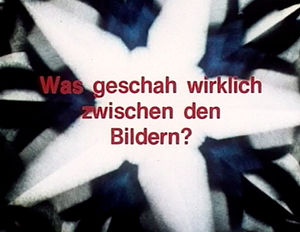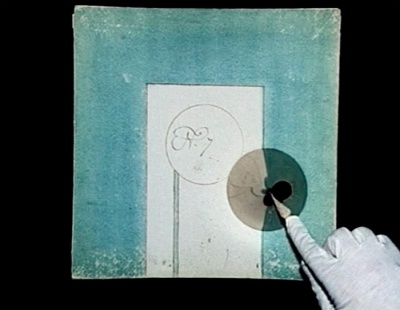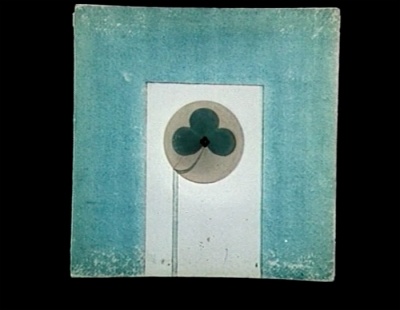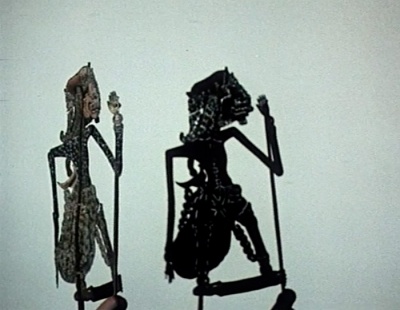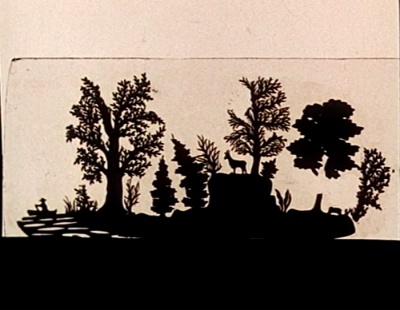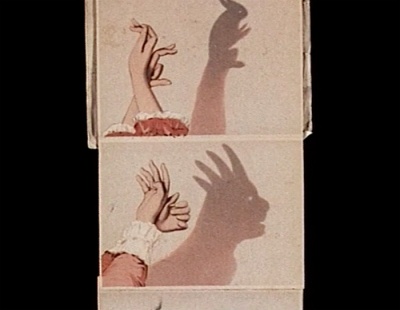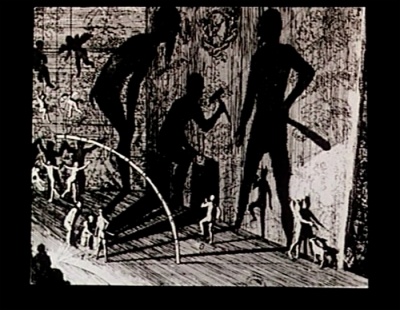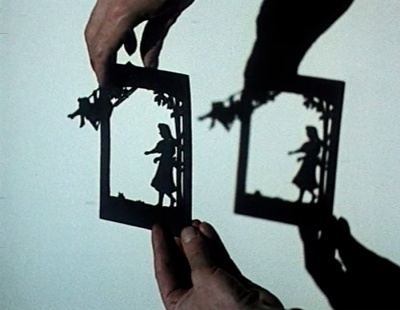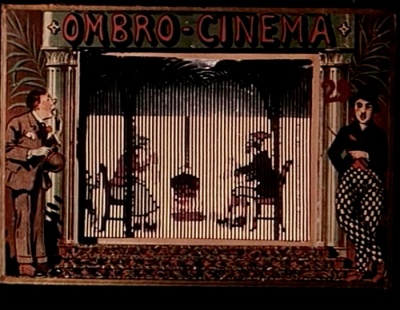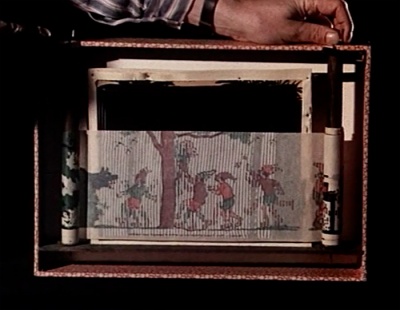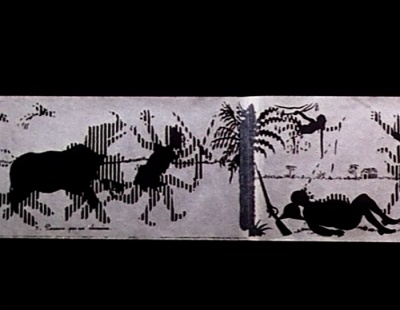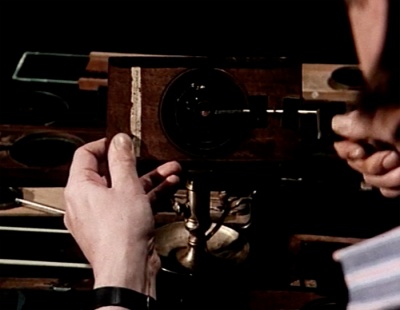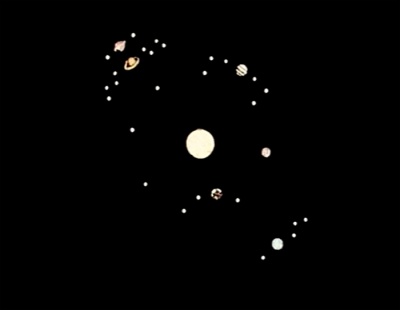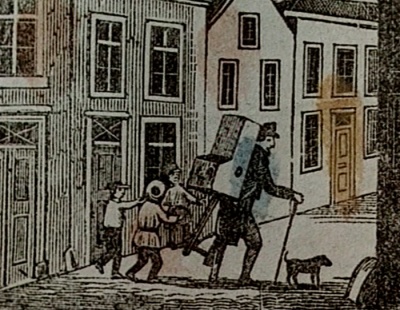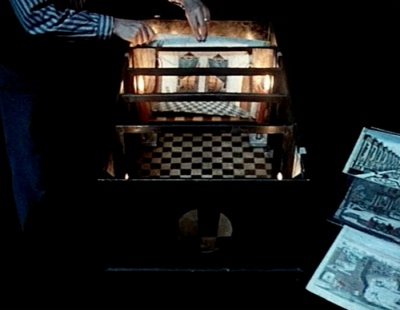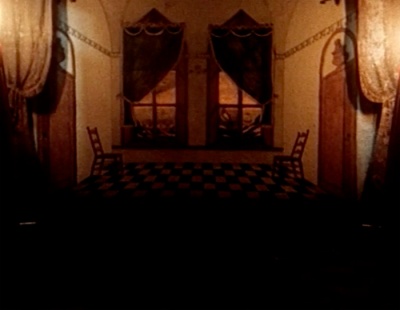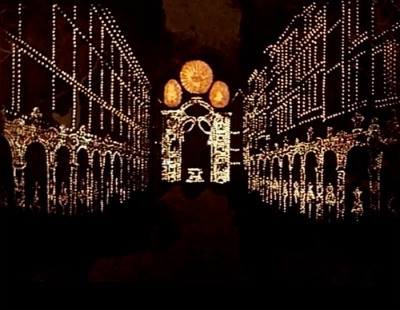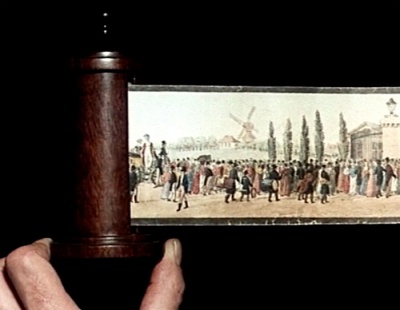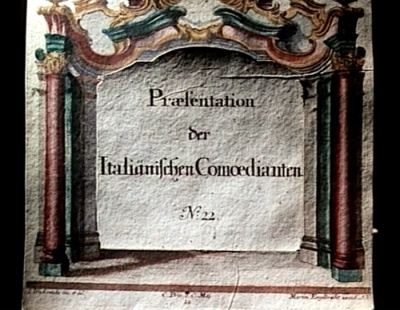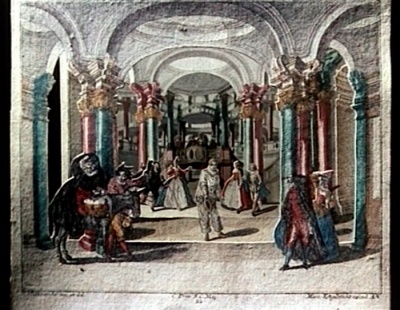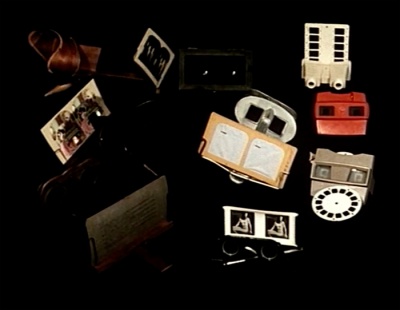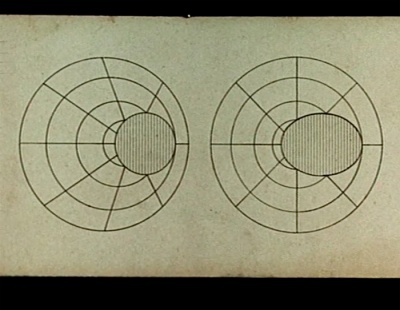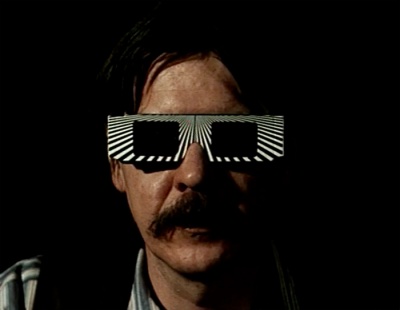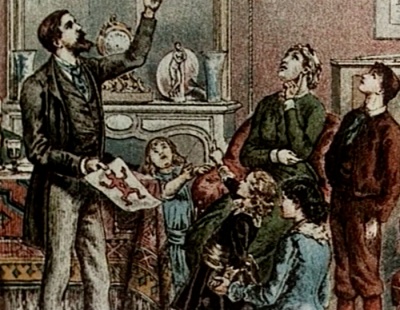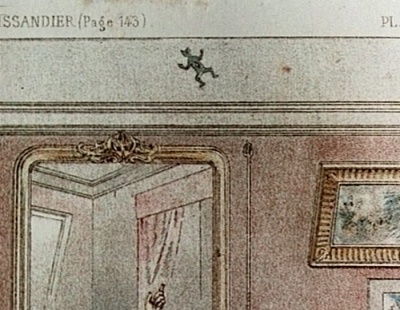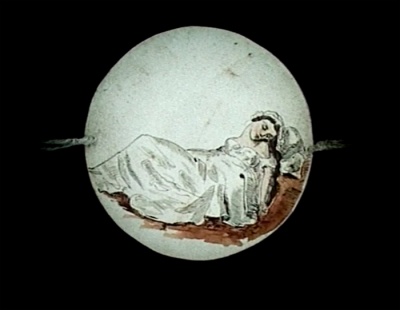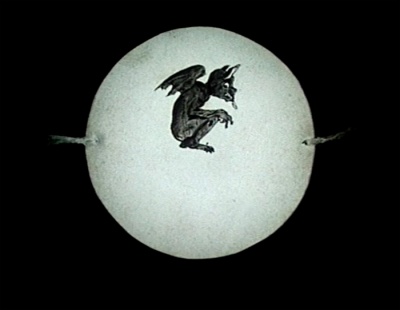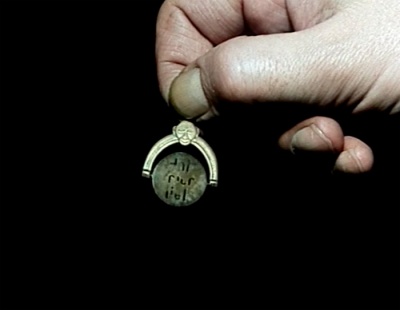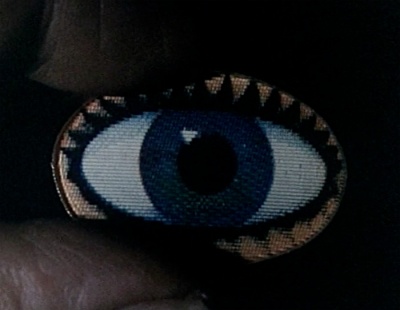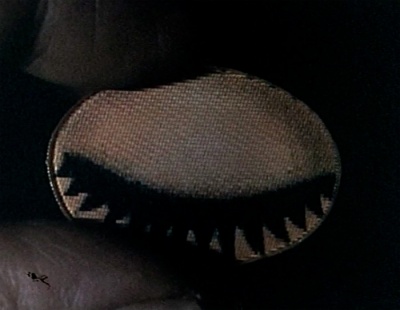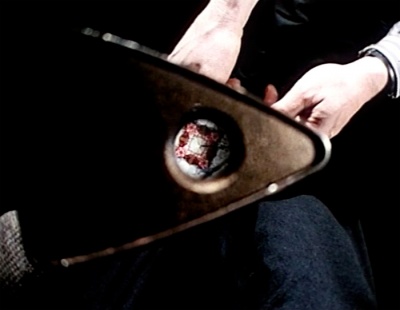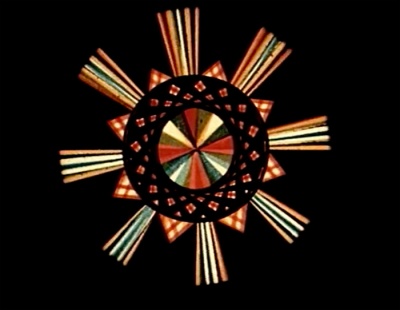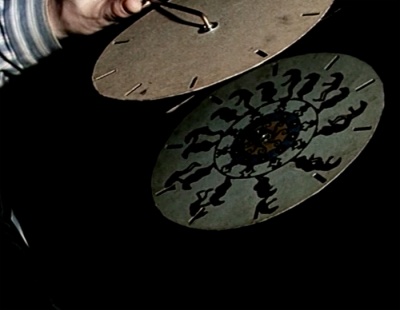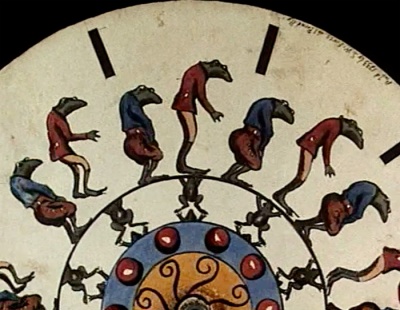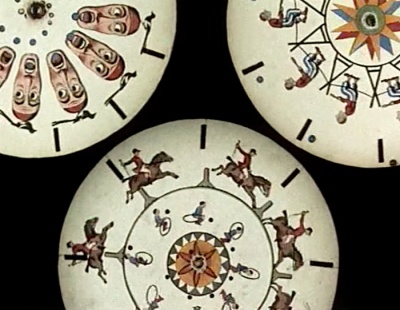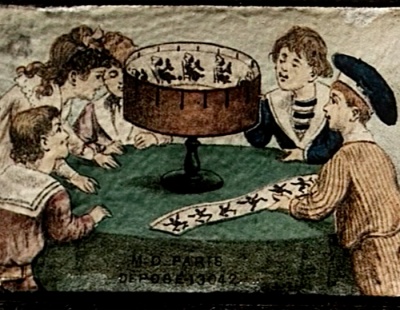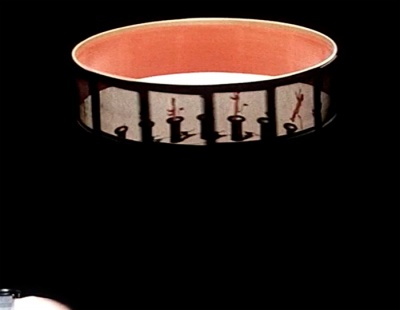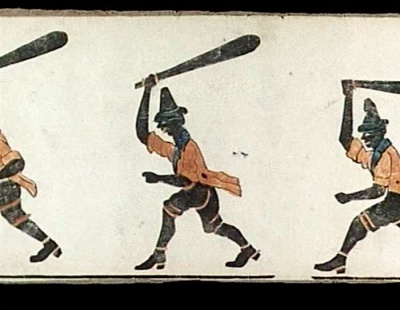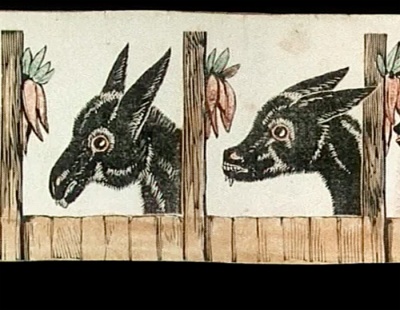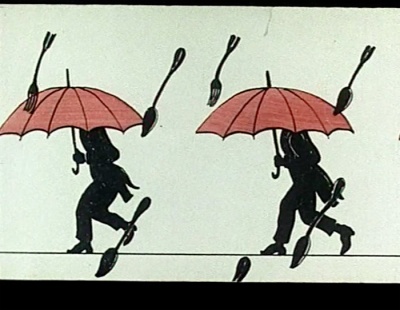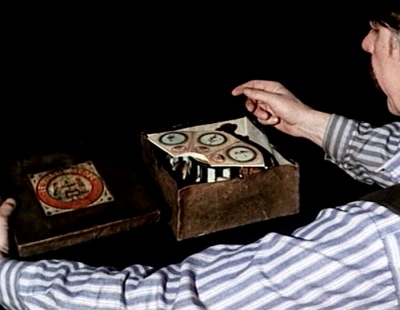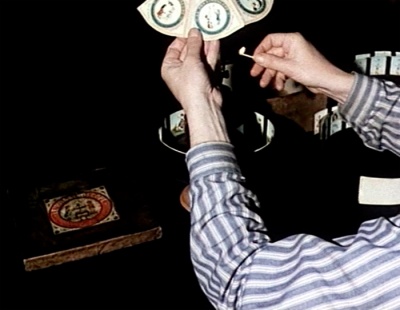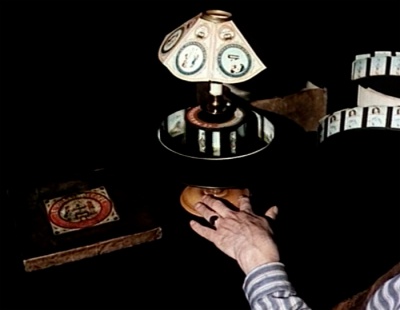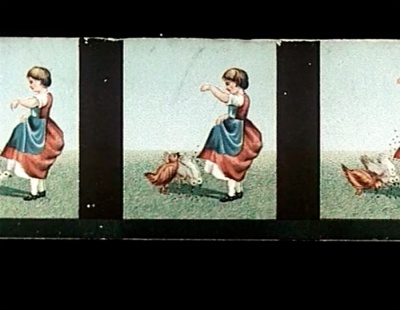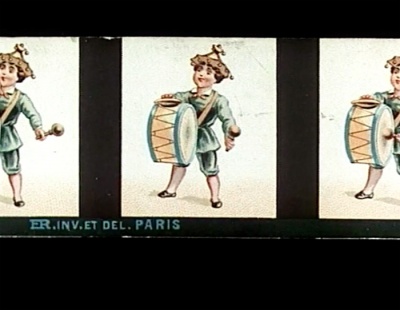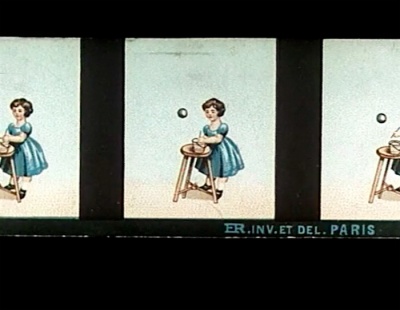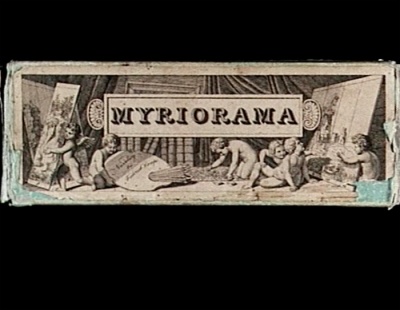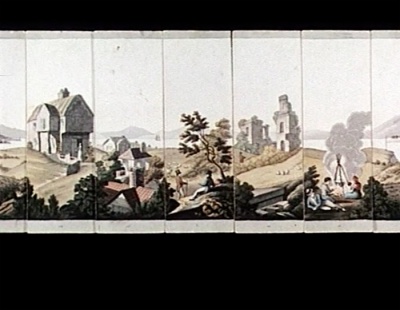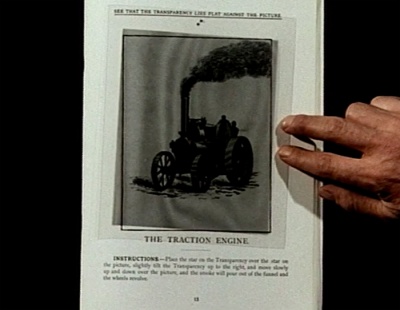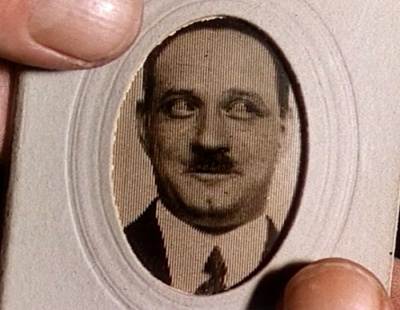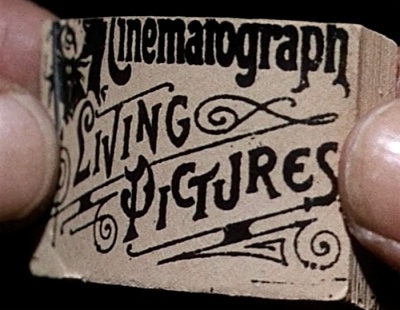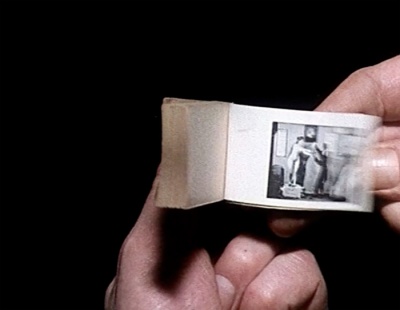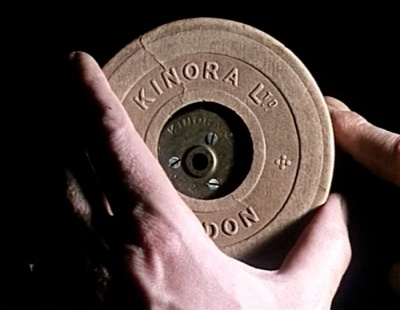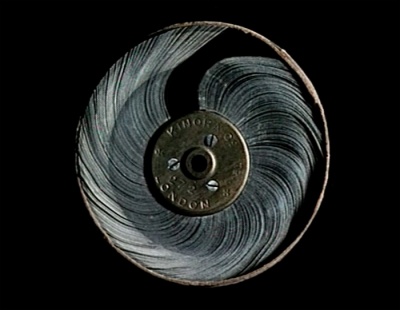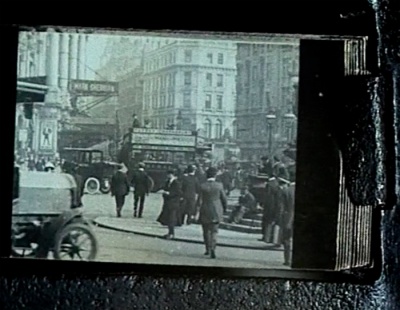User:Quinten swagerman/Research/Nekes
A selection of optical toys as shown in Werner Nekes' 1985 documentary 'Was geschah wirklich zwischen den Bildern?', in order of appearance
Mirrors
00:07:49
Anamorphosis - cone and cilinder mirrors - have been painted since the 17th century
Shadow play
00:09:39
The oldest form of the artistic use of light is the shadowplay...
00:10:23
These scissorcuts derived from the Chinese shadowplay
00:11:25
Hand shadows are still a popular game
00:11:38
In 1678, van Hoogstraten ran his own shadow theatre
00:12:22
Miniature mechanical shadow theatre scenes were also very popular
Ombro cinema
00:13:39
The ombro cinema, a shadow theatre of 1915, animates the shadows by conceiling and reveiling the different phases of movement behind black bars
Mechanical projection discs
00:19:59
This scientific disc simulates the complicated movements of the planetary movements in the solar system
Peepshows
00:29:05
The peepshow was being developed from perspective boxes and miracle cabinets. In the 17th century, showman began to travel in Europe, presenting their spectacles.
Scrolling panorama
00:35:43
Panorama of a trip from Hamburg to Luttener. The double-length panorama by Zoër (?) was seven centimeters high and high meters long
Theatre of perspective
00:38:17
Around 1700, Martin Engelbrecht from Alsburg constructs his theatre of perspective. He explores the sense of depth within the spacial dimensions of an image
Stereoscopy
00:43:41
In 1838, Winston invented the mirror stereoscope...
00:43:49
In 1849, Brewster the lens stereoscope
00:46:50 3D glasses for anaglyphs and for polarized images
The afterimage effect
00:48:15
A demonstration of the afterimage effect - the family has been looking at the red devil for a long while, then they look at the ceiling where they can see the devils afterimage in its complementary color: green.
The thaumatrope
00:51:45
The thaumatrope, or miracle disc, was invented in England by doctor John Ayrton Paris, in 1826
00:52:45
Two sets of half-letters, which, added together, say "Hab Mich Lieb"
Lens-prism animation
The designoscope
01:00:08
The designoscope - two mirrors meet at an angle of 60 degrees, as in the kaleidoscope, and produce an infinite variaty of patterns
The phenakistoscope
01:02:41
Inspired by Faradays wheel, Joseph Plateau in Brussels and Simon von Stampfer in Vienna, invent the phenakistoscope independently of one another in 1832. Stampfer called it the stroboscope. In England it was known as the phantascope. This disc demonstrates continuous movement for the first time.
A selection of discs:
The zoetrope
01:03:08
In 1833, Horner invented the Daedalum, later called the zoetrope, or wheel of life. Here, the phases of movement are also seen as an infinite loop through the slits
A selection of strips:
The praxinoscope
01:03:55
In 1877, Émile Reynaud built his praxinoscope, where you see the images in the mirrors. The function of the dark space in between the slits is taken over by the angle of the mirror at which it is set up.
Two years later he succeeded in showing the moving image within a scene, which is in fact a mirror reflection.
In 1880, he managed to project his moving images.
A selection of strips:
Myriorama
01:07:04
The myriorama, the show of the ten thousands. A panaroma in stripes which brings a new image in vertical montage.
Movement-producing grids
The flip book
00:13:34
The painter Lautenberg (?) is reputed to have created the first flip book, or thumb cinema, in 1760. Leaving through the book creates the illusion of movement.
The Kinora
00:14:07
In 1898, the brothers Lumiere built the Kinora, three years after their first film shows.

